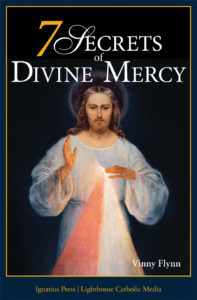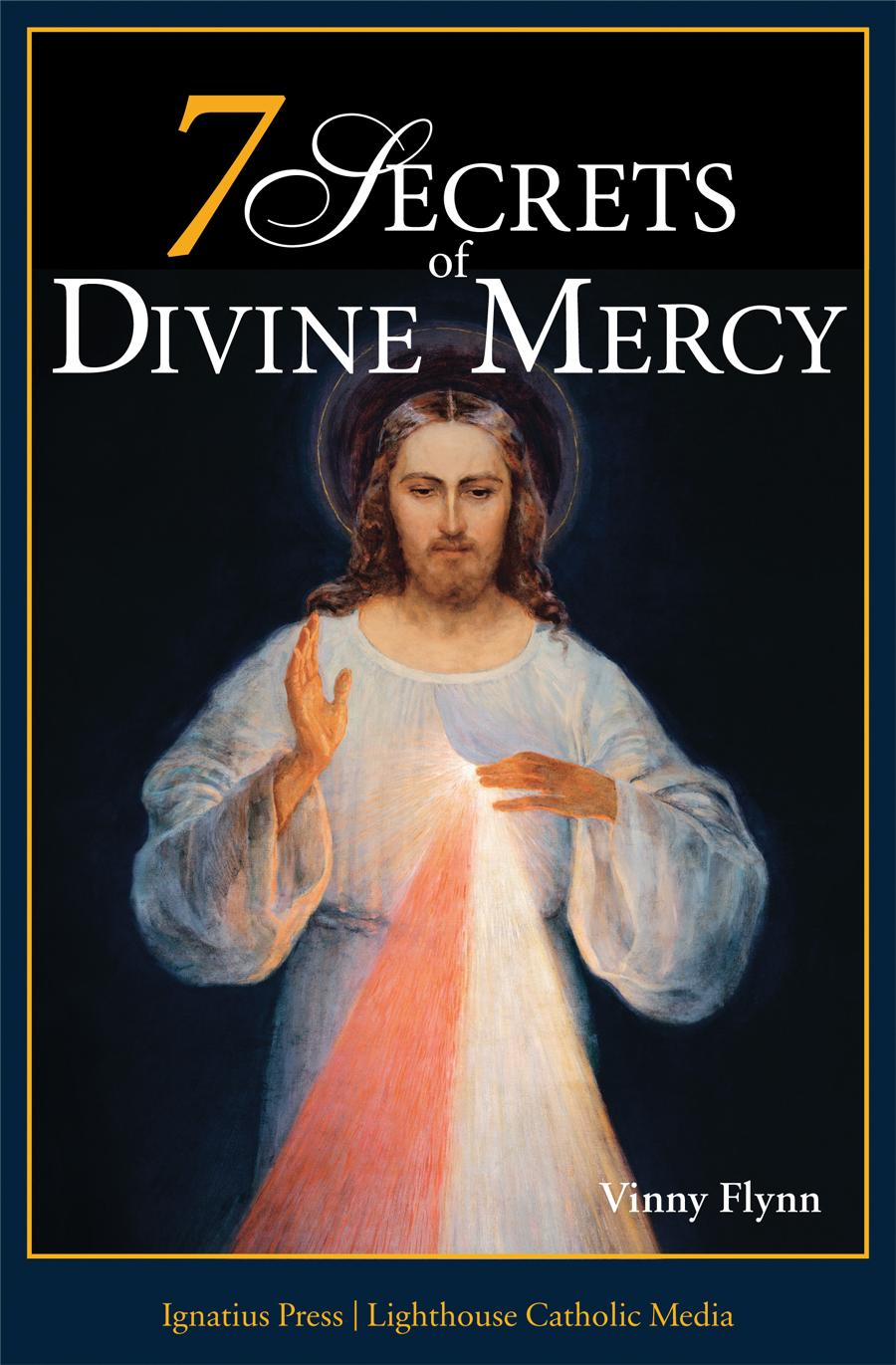[quote_box_right]
‘The 7 Secrets of Divine Mercy’
 Author: Vinny Flynn
Author: Vinny Flynn
Publisher: Ignatius Press / Lighthouse Catholic Media
Length: 247 pages
Release Date: Dec. 21, 2015
Website: ignatius.com
Accompanying CD: lighthousecatholicmedia.org
[/quote_box_right]
[dropcap]H[/dropcap]ere we are, Divine Mercy Sunday, this first Sunday of April, the Month of Divine Mercy, and the Year of Mercy, so what could be more appropriate than Vinny Flynn’s new book: “The 7 Secrets of Divine Mercy”?
Flynn is a “secrets” guy with this book and his two previous ones, “The 7 Secrets of the Eucharist,” and “The 7 Secrets of Confession.” This makes his work formulaic, and if you like your faith delivered in neat little pieces, this book is probably for you.
To look at the scope of Flynn’s current book, let’s look at the first “secret”: God Has a Plan.
My first reaction was, “duh, so what’s new?” Flynn, however, is a clever guy and before he delves into God’s plan, he asks the same question so as to ensure the reader that the obvious isn’t tedious. This is like what I tell my students: you can use a cliché if you acknowledge it as a cliché by using such phrases as “the old cliché, the old adage, the proverbial.” By doing this, all is forgiven and we can move on.
The essential nature of God’s plan is illustrated in Father, Child, and Love which represents, first, the totality of Creation, and second, the perfect family united eternally. God wants each of us to enter the Trinity Itself to be with Him forever. Because we are created in imago Dei, the image of God, it doesn’t take a theologian to see why every nuclear family is so important as a reflection of God’s plan and why the need to protect the family against the threat of progressivism choking our world and going after the Church is vital.
Chapter Two sports an interesting title, “Good enough is not good enough,” in modern parlance, “not everyone gets a trophy.”

The whole of Jesus’s teaching while He walked the earth came to just a few points, among which is the call to holiness. The problem with this call is that it represents a paradox: we are called to holiness and yet only God is holy. Secret Number Two? The holiness to which we are called is not our own holiness but that of God in us.
I don’t want to summarize all the secrets in this review and spoil a good mystery because then there would be no point in reading the book, but I do want to list the titles of the chapters because each one is its own temptation.
Chapter Three deals with the image of Divine Mercy and is titled, “It’s not Just a Picture of Jesus.” The image that we know was painted by St. Faustina after Jesus appeared to her in 1931.
The Lord told Faustina to paint the image of Him as Divine Mercy. The problem was that Faustina was a peasant girl with no knowledge of painting whatsoever. Miracles, of course happen. Interestingly, a card with the image of Divine Mercy was included with the book and I took that as a sign that the Lord was not going to allow me to lose my place. The card also allowed me to contemplate Divine Mercy, which is probably more to the point.
Chapter Four is entitled, “God loves backwards,” which is a secret in and of itself. The Fifth Chapter is titled, “Prodigal doesn’t mean Bad,” and I don’t mind giving a little secret away here, the word means “squander.” Chapter Six is titled, “You should always pray now and then,” which I can award a couple of points for the pun. Of course, he means that we should pray NOW and also THEN and this ultimately means “constantly.” I like it.
The final chapter, the Final Secret, is about transfiguration, not THE Transfiguration but our own transfiguration. Flynn refers to the whole process of coming to understand Divine Mercy as “TNT”, or “Transparency, New Life, and Transfiguration.” This means that Divine Mercy lies at the heart of our salvation and that the truth is metaphorically explosive considering our shallow fallen human nature.
This is one of those books that I must recommend because of the simple reasons that it is readable and will turn us upside down. And that’s the point, because only God can turn us right-side up.







